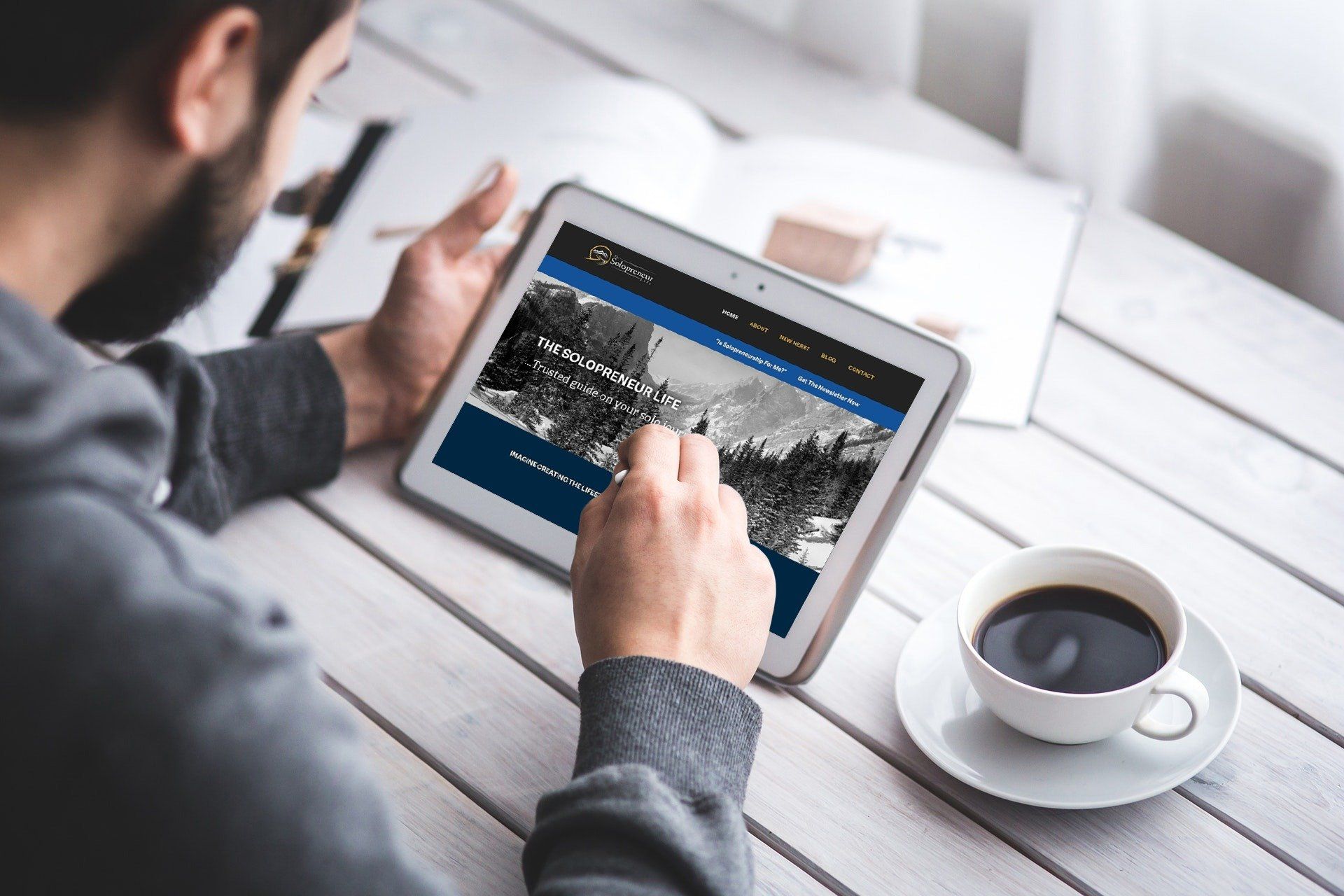The Solopreneur Life | Passive Income | Home Business
Women-Owned Small Business Opportunities in Federal Contracting
- By Jennifer Adeli
- •
- 23 Jan, 2012
By: WinBiz Proposals, LLC
Author: Jennifer Adeli, Owner and Senior Proposal Manager
@WinBizProps
and @SoloBizAdventur
Even in today’s environment of reduced and slower federal government spending, there are still plenty of opportunities for small businesses to grow, while serving the taxpayer and improving constituent services at the same time.

One of the recent initiatives is the Small Business Administration (SBA) Women-Owned Small Business (WOSB) and Economically Disadvantaged Women-Owned Small Business (EDWOSB) set-asides. This is also known as the 8(m) program. This program became a regulation in early 2011, but the broader WOSB community is still learning about it. In a nutshell, the federal government now has a requirement to award 5% of its contracting dollars to WOSB/EDWOSB firms.
What Is the Purpose of the WOSB Program?
The Federal government has both prime contracting and subcontracting goals for small businesses. More specifically, the Small Business Act requires 23% of Federal prime contracts dollars shall be awarded to small businesses, with individual prime and subcontracting goals for certain identified small business groups. Starting in 2011, the Federal government must now award 5% of its prime and subcontract dollars to women-owned small businesses. In addition, each Federal agency negotiates annual small-business goals with the SBA that presents, for that agency, the maximum practicable opportunity for small businesses. The goal attained by the individual agency is then used to calculate the government-wide small-business goal, including the individual prime and subcontracting goals for the identified small-business groups, such as women-owned small businesses.
This means that across the entire government, the goal is 5%. However an individual agency may have a higher or lower objective, based on their mission. I would expect that government agencies in industries traditionally heavily populated by women (think healthcare, education, etc.) may strive for higher goals; while agencies in more male-dominated industries (think defense, energy, etc.) may have lower goals.
Now while the agency may set an individual goal lower than 5%, that doesn’t mean that a WOSB in that industry shouldn’t push for set-asides. As a matter of fact, if you own a company that sells services in a male-dominated agency, there is a good chance there are not many other WOSBs; you could find a less competitive environment for those dollars, even if the percentage of total spending was lower.
5% Doesn’t Seem Like That Much — What Is the Magnitude We Are Talking About Here?
Not including mandatory spending (e.g. Social Security), the 2012 federal discretionary spending budget (e.g. the various departments, such as Agriculture, Education, Defense) is approximately $1.34 trillion. Five percent of that total spending is about $67 billion!! That $67 billion has been earmarked for WOSBs to improve the opportunities for women-led companies in federal contracting, and to improve economic development for women-owned businesses across the economy.
What Government Projects Are Eligible For the WOSB Set-Aside?
So now you are thinking, “that sounds interesting, but what my company does probably doesn’t relate to this. We do {insert service} and I don’t think that the federal government would buy that service from me.”
Actually there are 83 industries eligible for the WOSB set-asides, and are defined by their 4-digit NAICS code. These are as wide-ranging as Residential Building Construction (NAICS 2361); Software Publishers (5112); Advertising, Public Relations, and Related Services (5418); Management, Scientific, and Technical Consulting Services (5416); Outpatient Care Centers (6214); and even Independent Artists, Writers, and Performers (7115).
So don’t discount the opportunity to work with the federal government; there is a good chance that if you sell it, the federal government is buying it. And now with the WOSB set-aside, there are more opportunities to win that business in a more efficient manner.
Eligibility Requirements For the Program
To be an eligible WOSB, a company must:
• Be a small business that is at least 51% percent unconditionally and directly owned and controlled by one or more women who are United States citizens.
• Have a woman manage the day-to-day operations, make long-term decisions for the business, hold the highest officer position in the business and work at the business full-time during normal working hours.
To be an eligible EDWOSB, a company must:
• Be a WOSB that is at least 51% owned by one or more women who are “economically disadvantaged.”
• Have an economically disadvantaged woman manage the day-to-day operations, make long-term decisions for the business, hold the highest officer position in the business and work at the business full-time during normal working hours. A woman is presumed economically disadvantaged if she has a personal net worth of less than $750,000 (with some exclusions), her adjusted gross yearly income averaged over the three years preceding the certification less than $350,000, and the fair market value of all her assets is less than $6 million.
Generally this means that you can’t game the system, by being the majority owner on paper, but having no direct involvement in the day-to-day operations.
There Are Government Contracts Awarded Every Day That Are Not WOSB Set-Asides. How Do I Know Which Ones Are?
There are a number of steps that have to happen for a contract to be an 8(m) set-aside.
First, the work must be within those NAICS codes mentioned above. Second, the government must have a reasonable expectation that two or more WOSBs will submit offers that meet the requirements of the acquisition. This is sometimes referred to as the “rule of two.” Finally, the anticipated award price of the contract cannot exceed $5 million for manufacturing contracts and $3 million for all other contracts.
Regarding the “rule of two,” this is an important point to make. When the government is unsure about the ability of the marketplace to meet a set-aside goal, they often release a test solicitation — usually a Request for Information (RFI), Sources Sought notice, or a Draft Request for Proposal (RFP). In that release, they request the marketplace to provide information about their services, their company profile, and their ability to meet the specific requirements of that project. This is the government’s way of testing the waters to see if they can get at least two proposals and therefore have a fair and open competition.
So it is important that WOSBs regularly respond to these requests, so that the procurement office knows that there are capable WOSB companies that can meet their needs. If the government doesn’t get enough qualified interest, they can designate the procurement under another set-aside or in a full and open competition.
I’m Interested — Now What?
There are certification requirements to become part of the WOSB program, however they are straight forward and online. You can choose to use either a Third Party Certifier, or can self-certify on the SBA website. The SBA has a great PowerPoint presentation on getting started — click here to download. You can also visit a local SBA office for advice and assistance.
Once you are designated, it’s happy hunting! Start with Federal Business Opportunities (www.fbo.gov) which is the official website for most (not all) government contracts. You can search by set-aside type, government agency, or NAICS code. Currently there are more than 20 WOSB opportunities that have been posted in only the last 90 days in a wide variety of services and locations.
Useful Links
Free Newsletter "Get the Latest Solopreneur Tips and Advice"
Thank you for contacting me.
I will get back to you as soon as possible
Please try again later







The Solopreneur Life
Your Trusted Guide On Your Solo Journey...
Join the Newsletter
Contact Us
We will get back to you as soon as possible
Please try again later
All Rights Reserved |The Solopreneur Life



